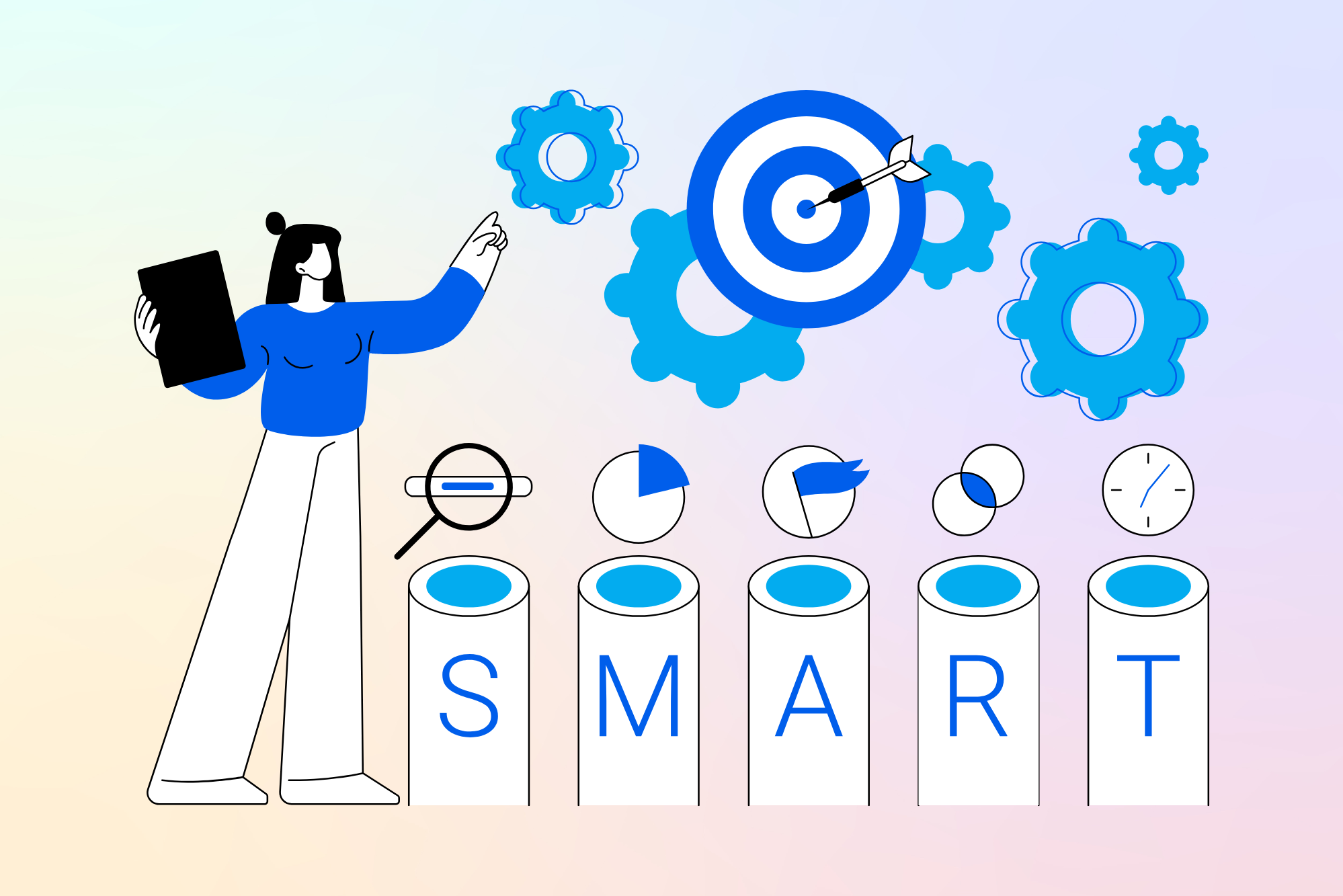Start improving with Life QI today
Full access to all Life QI features and a support team excited to help you. Quality improvement has never been easier.

Organisation already using Life QI?
Sign-up

In this blog, we‘re going to be looking at how you can measure scale and spread in your Quality Improvement (QI) projects and what methods you can use to help you do this.
Let’s start by defining spread and scale in QI. Spread replicates an initiative somewhere else, while scale-up builds infrastructure to support full scale implementation. If you haven’t already, you might want to look at our article ‘Spread and scale – what’s the difference?’ to read about the differences in more detail.
Creating and developing a measurement system for scale and spread can seem like a daunting task. However, there are plenty of ways you can approach this, as well as resources and tools that can help you. We’re going to take a look at a few ideas, mechanisms and measurements you could use when developing your system to measure scale and spread.
In the article ‘Spreading and scaling up innovation and improvement’ the authors take a detailed look at the use of different change logics to measure impact, these are: ‘mechanistic, ecological, and social’ - which can all be used in the spread and scale up of QI projects. They give examples of successful projects that were scaled up, including a project on the ‘intervention of physical activity and healthy eating in elementary schools’ in British Colombia, Canada, where the team evaluated efficacy using controlled trial in 10 schools, by measuring four outcomes. The implementation and scale up phase saw 248 schools being supported in embedding the intervention, and the programme was successfully sustained over 10 years.
The authors explain that ‘This is a rare example of a predominantly top-down (structured and programmatic) spread and scale-up strategy that achieved widespread coverage and measurable improvements in some but not all outcome measures. Its success, however, is also likely to be attributable to the use of participatory research and social-ecological theories and to a positive policy context, strong professional buy-in, generous resourcing, and long timescale.’ This gives an example of what can be achieved when spreading and scaling up a QI solution, with careful planning and measurement tools in place.
The BMJ Quality Improvement Project guide examines how to measure a QI project and develop a measurement system for change. They signpost QI teams to the Institute of Healthcare Improvement’s (IHI) Model for Improvement, and - for measuring changes more specifically - to its article ‘Science of Improvement: Establishing Measures’. In this helpful article, the author states: ‘Measurement is a critical part of testing and implementing changes; measures tell a team whether the changes they are making actually lead to improvement.’
The IHI talks about the three measures needed for QI: Outcome Measures, Process Measures and Balancing measures.
Outcome Measures look at how the system impacts the values of patients and their health and examines the impacts on other stakeholders.
Process Measures encourage QI teams to investigate whether elements of the system are performing as planned and whether the team is on track.
Balancing Measures encourage the user to look at a system from different directions and identify whether any changes are causing new problems elsewhere.
The IHI also encourage you to measure and plot your data over time. You could use something like a run chart which can help you establish whether your changes are leading to improvement.
So, there are plenty of different authoritative voices out there demonstrating the importance of measuring the outcomes of your project – and many approaches you could use to do this. However, the amount of data that you will need to measure may still seem like a daunting task. There are, however, QI technology solutions out there which will help you to measure impact and measure scale on a regular basis with very little effort. Solutions such as Life QI – a leading improvement project management and analysis platform – enable you to run, organise and measure all your improvement work in one place. Thousands of healthcare organisations are using Life QI to run and then scale or spread their QI projects.
If you want to delve into more detail about what type of measures are available, take a look at the piece: ‘Understanding the three types of measures, Process, Outcome and Balancing’ which will talk you through these measures.
In the article 'Trialists perspectives on sustaining, spreading, and scaling-up of quality improvement interventions,' the authors describes sustainability in QI as “one of the least understood and most vexing issues for implementation research”. Innovations in QI can sometimes be abandoned, not adopted and there are frequently failed attempts to scale up, spread or sustain at system or organisation level.
But don't let this put you off! There are very distinct methods you can use to adopt spread and scale in QI. And – as we explored earlier – there are various methods and tools to help you measure impact and measure scale.
Here are some examples of frameworks you can consider for your expanding your QI project:
The Consolidated Framework for Implementation Research (CFIR) brings together key constructs across five domains (intervention characteristics, outer setting, inner setting, characteristics of individuals, and process) and is associated with effective implementation.
'Beyond Adoption: A New Framework for Theorizing and Evaluating Nonadoption, Abandonment, and Challenges to the Scale-Up, Spread, and Sustainability of Health and Care Technologies' describes the ‘NASS’ framework which you can use for scaling up and spread.
East London NHS Foundation Trust (ELFT) have a QI Scale-up & Spread Planner which can help guide you in your planning and thinking as you complete the helpful planner.
NHS Education for Scotland has a really useful ‘Readiness for Spread’ checklist that you might want to look at to prepare for spread and scale in your QI project.
In its Diffusion Checklist, the Mayo Clinic sets out its methodology which consist of four phases—alignment, discovery, managed diffusion, and measurement. They suggest allocating a 'Measurement Coordinator' to the team, who can provide support for the QI project. They also highlight the importance of planning for the collection of key metrics, as well as setting out a list of things to do including the organisation and coordination of data collection efforts in alignment with your accepted measurement plan.
When you are preparing to spread your project and looking at measuring results, it is also worth looking at the the Institute for Healthcare Improvement’s (IHI) ‘7 Spreadly Sins’ and – in particular - avoiding sin number 7: ‘Check huge mountains of data just once every quarter’. The IHI advise checking small samples daily or frequently, which helps you to decide which practices to adopt and spread. Once again, a solution such as Life QI not only helps you measure scale and spread, but keeps all your QI data in one place, so you’re able to monitor and check data on a regular basis.
We explored spread and scale in our article ‘How to implement QI projects successfully,’ where we took a look at a very helpful video from Dr Shah at East London Foundation Trust. He sets out a range of methods you can use to go forward … these are:
So, we’ve looked at the types of measures you can use to measure impact in QI spread and scale, and explored various methods, tools and solutions that can help you measure scale, spread and impact. Finishing with the words of the article: ‘Understanding the three types of measures, Process, Outcome and Balancing’: ‘Measures are how you quantify and measure the impact of your changes on the system. They allow you to answer the crucial question: how will we know that a change is an improvement? They also help you to make predictions of what you expect to happen. This is crucial in healthcare systems where foreseeing negative impact as far as possible is imperative.’
Good luck with your QI project and measuring its outcomes!
Full access to all Life QI features and a support team excited to help you. Quality improvement has never been easier.

Organisation already using Life QI?
Sign-up


.png)


